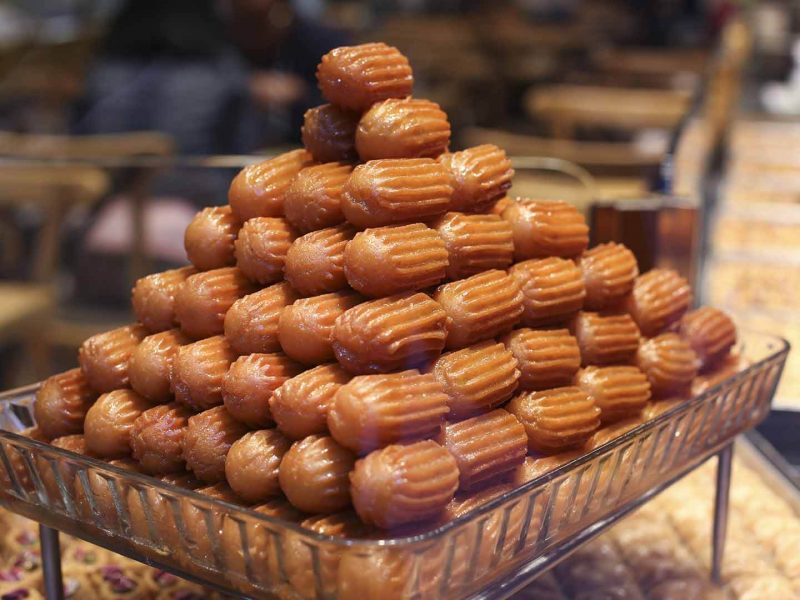Although we have been offering an abundance of kebabs to tourists visiting our country in recent years, one of our most important culinary contributions is traditional Turkish desserts.
Turkish sweets have been indispensable in palace kitchens from the time of the Seljuk period, evolving throughout the Ottoman culture. It is not hard to understand why the dessert is dangerous. When plenty of flour, sugar, and calories come together, it means both great taste and you can gain weight. Our desserts are generally divided into two categories: syrupy and milky, but we can find many different types of desserts on our tables with a variety of presentation, taste, and content.
Turkish Desserts from the Seljuk and Ottoman Periods
Even though desserts are not on the forefront of cuisine culture in Central Asia, during the Seljuk period, desserts had a prominent place on the magnificent banquets that we call the palace cuisine. Especially in the Ottoman period, one-fifth of the 60-person palace culinary team consisted of confectioners. The desserts were served at the end of the meal, usually with syrup obtained by natural fruits. This tradition has reached our present day. Especially in recent Ramadan iftars, the traditional Turkish desserts are served with syrup again.

Assorted traditional Turkish delight.
Turkish Desserts with Syrup
Desserts with syrup are definitely dangerous. Here we include some desserts that many dietitians say to keep away from, but almost all of society has allied with the flavor.

Homemade Sweet Red Pomegranate Grenadine Syrup in a Bottle.
Kadayıf
Kadayıf is a dessert with plenty of syrup and it is served with pistachio and ice cream. Varieties of kadayıf date back to the 10th century. Further, künefe that is famous in the Hatay region, is also made of kadayıf.

Homemade Turkish Dessert Fincan Kadayif.
Baklava
Baklava is made of wafer-pin phyllo and it is an indispensable dessert, especially for bayram (religious holidays). Even though it is known today that baklava is prominent in the Gaziantep region, different types of baklava are made in almost every part of Anatolia. Baklava with walnuts and pistachios, along with plenty of syrup, is one of the most dangerous desserts.
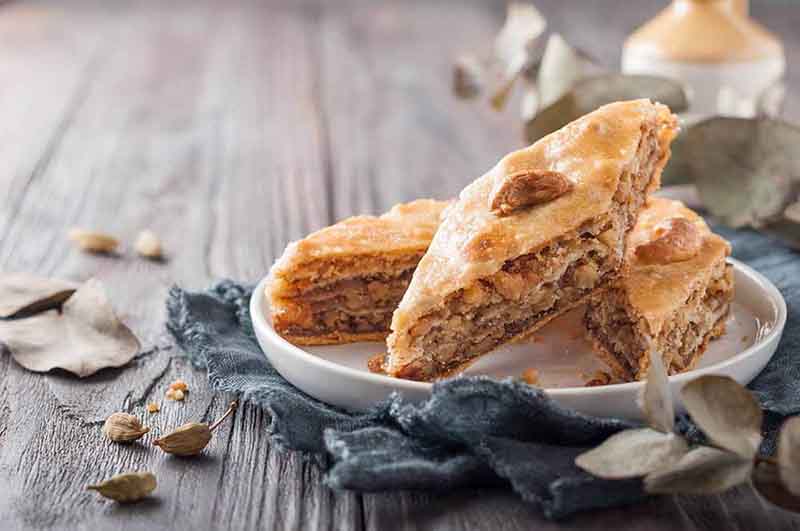
Homemade baklava with nuts and honey.
Nut Pumpkin
Anatolian people use the products of the geography very well. Nut pumpkin was commonly enjoyed at the palace table of Ottoman. Decorated with hazelnut and walnut, nut pumpkin is a delicious dessert.

Nut Pumpkin
Kerebiç
Among the authentic desserts with syrup is the kerebiç, which belongs to the Mersin region. It is served with the foam of soap root. In Gaziantep region, there is a dessert like this named gerebiç. In Mersin, kerebiç is still served in the local shops in a traditional manner, with a wooden spoon.
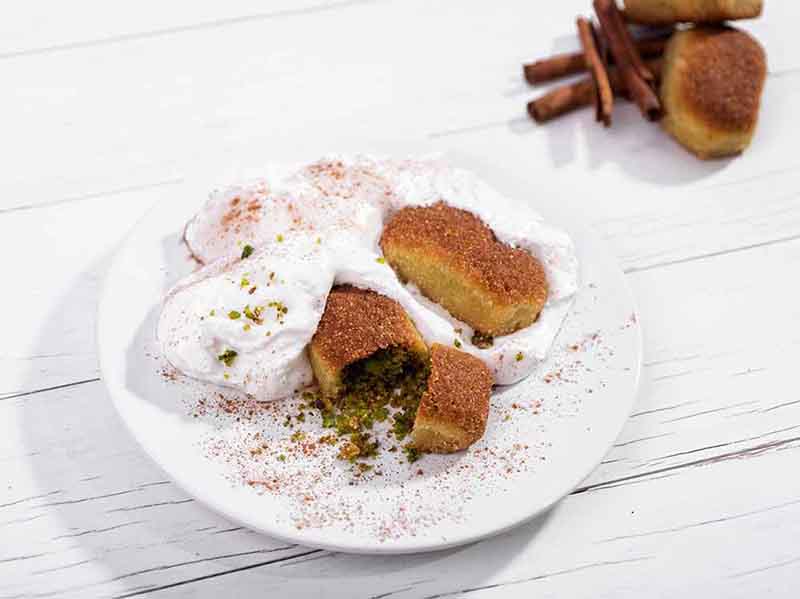
Kerebiç, a famous dessert of Mersin region.
Şambaba
Şambaba dessert was sold frequently on the streets in in the past but its popularity slowly faded. Special care needs to be taken to get the consistency of the syrup right to enrich its aroma.
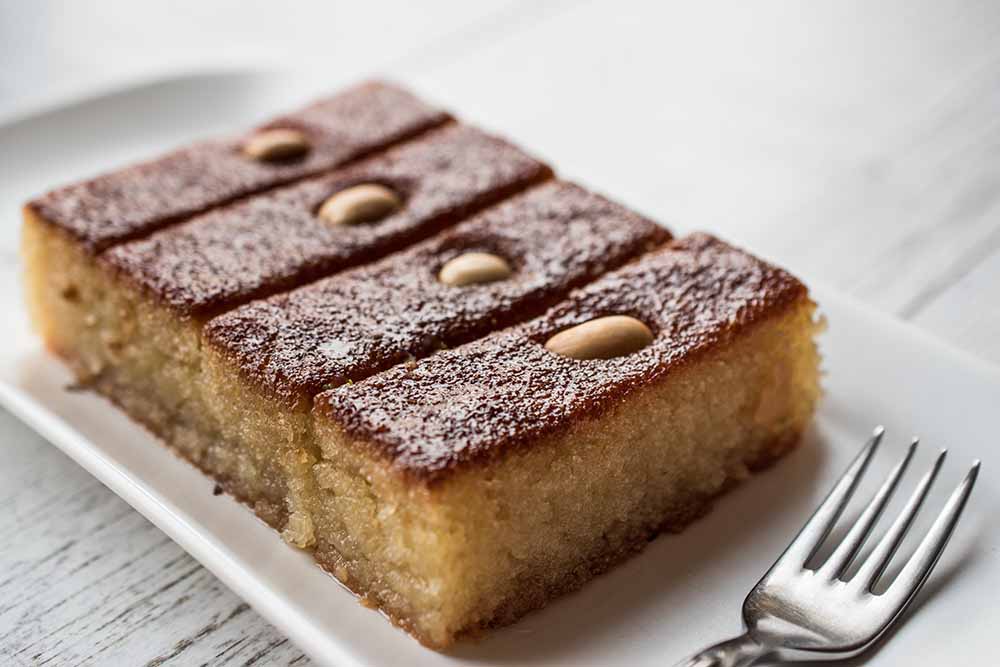
Şambaba dessert
Şekerpare (small cakes with syrup)
Şekerpare, which has been consumed since the Ottoman Era, is a very tasty dessert in which plenty of sugar is used, along with coconut.
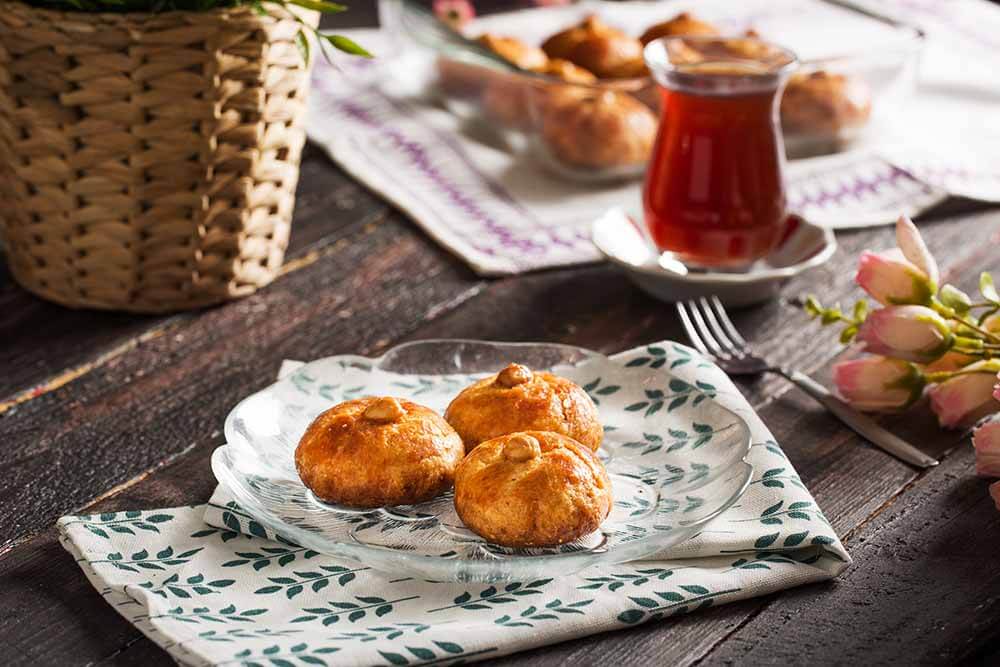
Şekerpare dessert
Dilber Dudağı (Sweetheart’s lips)
A kind of baklava, re-spreading the imbricated dough that is used in making baklava makes Dilber Dudağı. It is very delicious with its crunchy consistency and hazelnut spread.
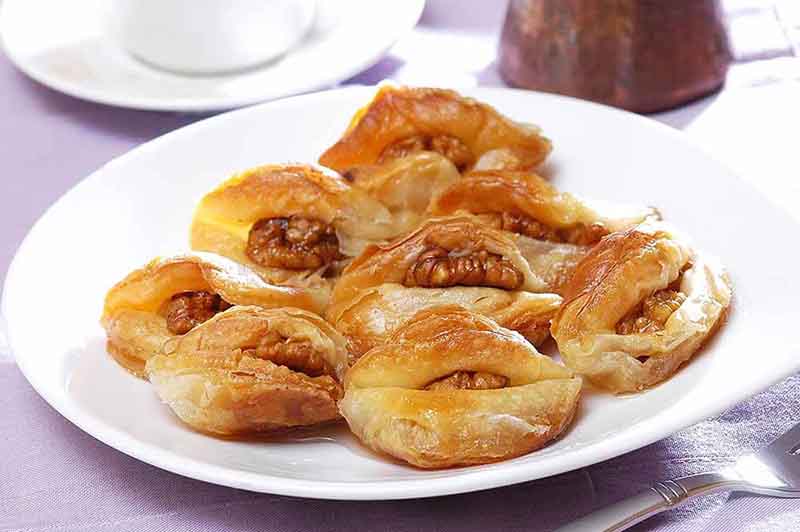
Dilberdudagi with walnut
Kemalpaşa Dessert
Kemalpaşa dessert is made of flour and semolina and is flavored with special cheese. It is delicious with its gummy consistency. If you go to the district of Kemalpaşa in Bursa, you need to taste this dessert.

Kemalpaşa dessert (which can be served also with cream)
Our Traditional Milky Desserts
Even though the desserts with syrup have great presentation and taste, they are not the best for your health. Compared to the desserts with syrup, the traditional milky desserts are more innocent, and they have a lot of varieties. In fact, when we examine the Ottoman Palace cuisine, we can see that the milky desserts are served in more varieties than the desserts with syrup.
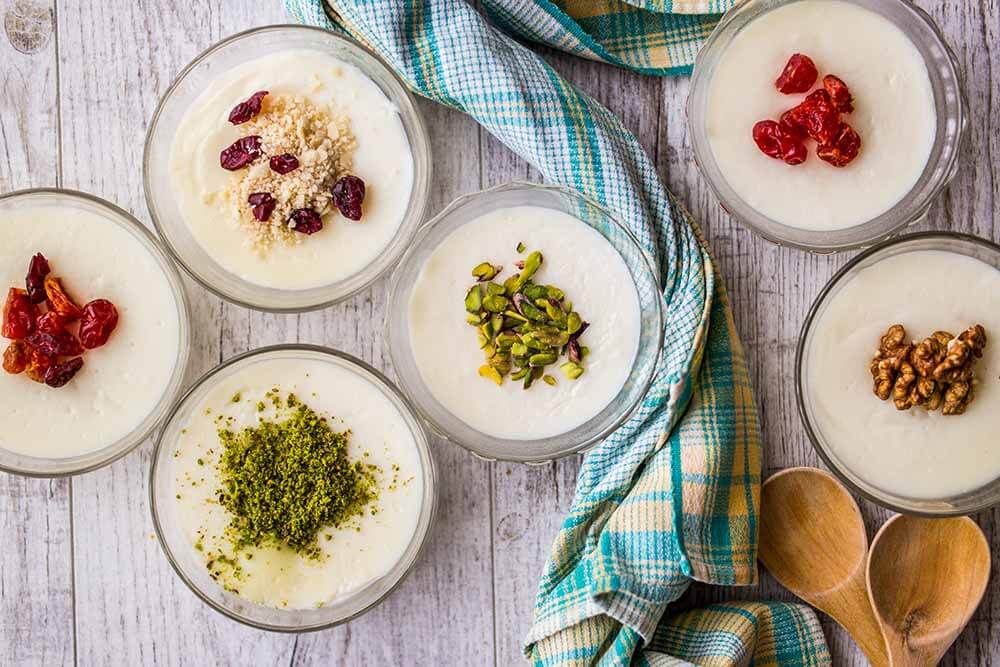
Turkish Dessert Muhallebi
Sütlaç (Rice pudding)
The rice pudding, which has been found on our tables since the Central Asian Period, is a wonderful kind of dessert composed of the words “milky food”. Cinnamon is generally preferred as a sweetener for dessert where rice and milk are used in large amounts. The baked rice pudding attracts special attention with its unique aroma.

Sütlaç (rice pudding)
Tavuk Göğsü (Chicken breast with white pudding)
Found on the tables of the Romans, chicken breast with white pudding was also an accepted part of Ottoman cuisine, and it evolved to form kazandibi dessert (white pudding with a caramel base) by the Ottoman confectioners. And yes, it includes real chicken meat!
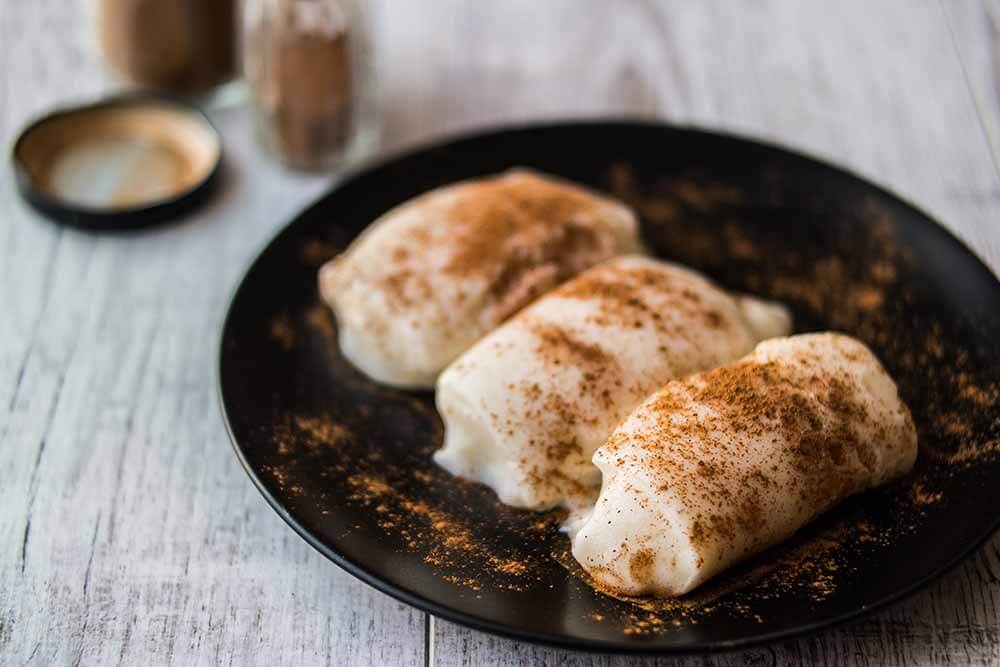
Tavuk Göğsü (chicken breast dessert)
Puddings
In the early years of the Republic, there were pudding shops instead of pastry shops. Puddings, in different flavors and presentations, were served in the shops where lovers often came together. Starch pudding with rose water is the most famous kind of pudding.

Rice pudding with cinnamon is one of the most popular among Turkish desserts
Keşkül (Milk and almond pudding)
One of the desserts dating from the Ottoman cuisine to the present day, keşkül, achieves a beautiful aroma with the addition of almond and is also quite light compared to other desserts.
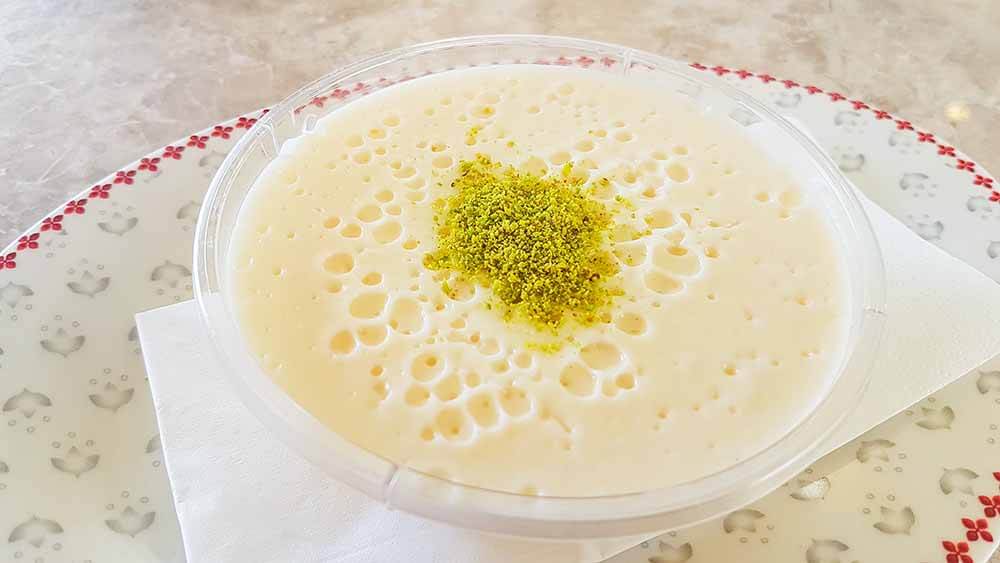
Keşkül is a light dessert
Halva
The meaning of the Arabic halva is “dessert”. Halva, which takes a separate place among the traditional desserts, also carries a mystical air. Particularly, flour halva is cooked and served together with holiness by the people in Anatolia. Halva is cooked for special ceremonies, including soldier farewell gatherings, funeral rites, and the Islamic memorial ceremony after the funeral. Semolina halva, cheese halva, flour halva, and honey halvah are the most popular types of halva due to their presentation and flavor.
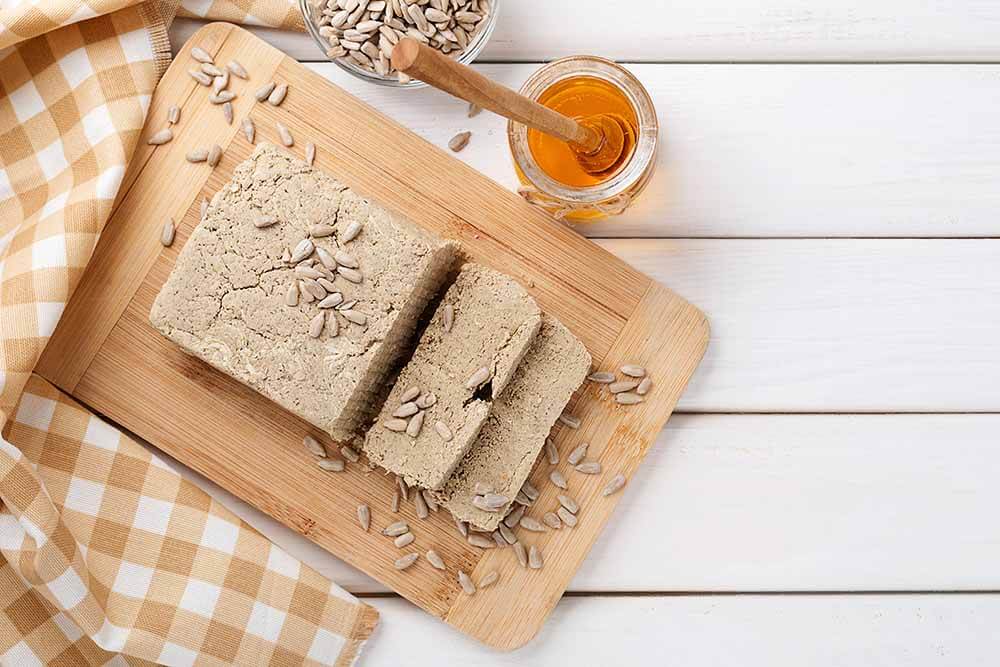
Halva with sunflower seed
Bonus: Aşure (Noah’s pudding)
The story of aşure (read as ashoura) that occurred with a religious metaphor is quite interesting. When the Great Cataclysm occurred during the time of Noah, the food of those who remained on the ship gradually decreased. Descending supplies were brought together and a meal was cooked. In this way, the type of food that we call ashoura has been carried out in Anatolia with different traditions. In some places, mothers who have only daughters are cooking ashoura. With its unique taste and aroma, ashoura is one of our extraordinary desserts.
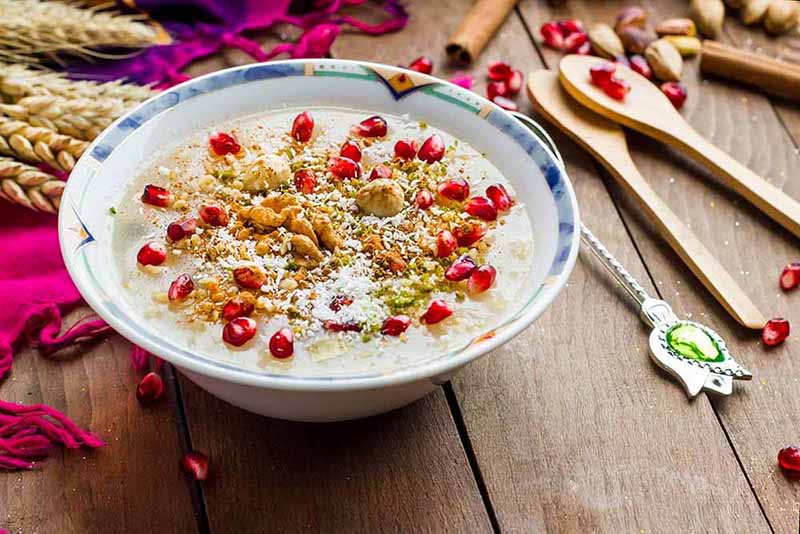
The oldest dessert in the world, aşure (Noah Pudding) traditional dessert to serve on the 10th day of the Muslim month Muharrem, which is the first month of the Islamic calendar.

